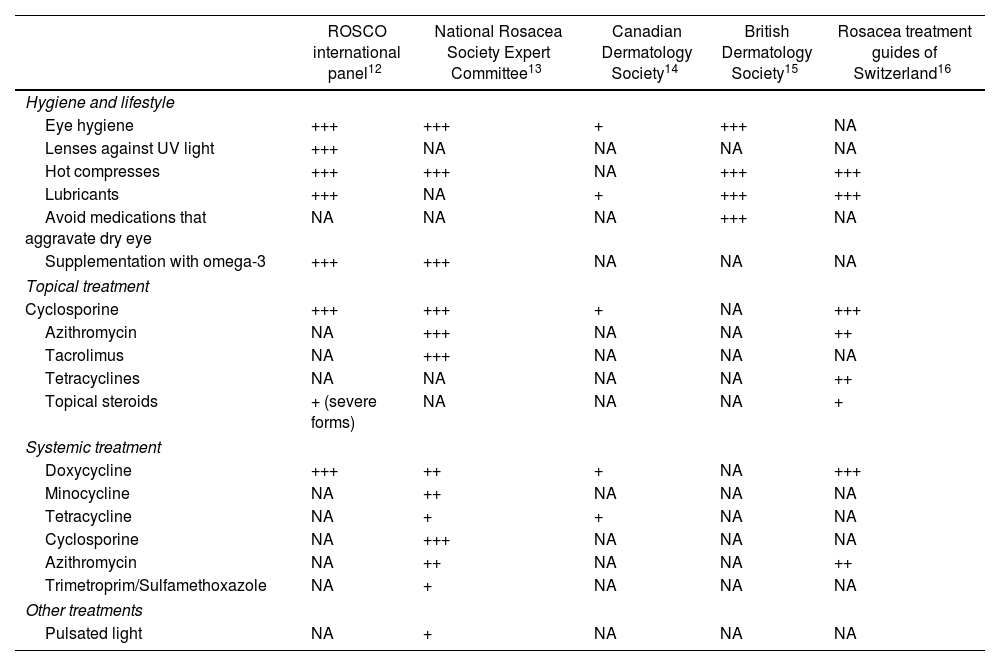Rosacea is a chronic and inflammatory disease that primarily affects the skin, although more than half of cases also present with ocular symptoms ranging from blepharitis to conjunctivitis and keratitis. It represents a frequent reason for consultation with a psychosocial impact, affecting quality of life, and requires management involving ophthalmologists, dermatologists, and primary care physicians. For this paper, a search was conducted in several databases, including Medline, Embase, Cochrane, and Google Scholar, using the MeSH term "rosacea" in conjunction with other relevant keywords such as "ocular rosacea", "management", "treatment", and "guidelines". Available articles were reviewed. International and local guidelines recommend initiating the management of rosacea with lifestyle changes, including ocular hygiene and avoidance of triggers. Topical or oral treatment is recommended as the next step, with topical cyclosporine, topical azithromycin, topical tacrolimus, and oral doxycycline being the treatments most supported by evidence. Combination treatments are also recommended. Current management guidelines mainly focus on cutaneous manifestations, generating few guidelines on ophthalmologic treatment, and most recommendations are issued by experts. This work compares local and international treatment guidelines for rosacea, as well as other available medical literature, and suggests a practical and interdisciplinary treatment scheme for ocular involvement based on the reviewed bibliography.
La rosácea es una enfermedad crónica e inflamatoria que afecta principalmente la piel, aunque más de la mitad de los casos también presentan síntomas oculares. Estos pueden ir desde blefaritis hasta conjuntivitis y queratitis. Representa un motivo de consulta frecuente con un impacto psicosocial y en la calidad de vida; su manejo compete tanto a oftalmólogos, dermatólogos y médicos de primer contacto. Para esta investigación, se llevó a cabo una búsqueda en varias bases de datos, incluyendo Medline, Embase, Cochrane y Google Scholar. Se utilizó el término MeSH "rosácea" junto con otras palabras clave relevantes, como "rosácea ocular", "manejo", "tratamiento" y "guías". Se revisaron los artículos disponibles. Las principales guías internacionales y locales recomiendan iniciar el manejo con cambios en el estilo de vida, con especial énfasis en la higiene ocular y evitación de desencadenantes. Como siguiente paso, se recomienda el tratamiento tópico u oral, siendo la ciclosporina tópica, la azitromicina tópica, el tacrolimus tópico y la doxiciclina oral los tratamientos más respaldados por la evidencia. Se recomienda combinar tratamientos. Las guías de manejo actuales se concentran principalmente en las manifestaciones cutáneas y generan pocas directrices sobre el tratamiento oftalmológico. La mayoría de las recomendaciones son emitidas por expertos. En este trabajo, se comparan las guías de tratamiento locales e internacionales de la rosácea, así como otra literatura médica disponible, y se sugiere un esquema de tratamiento práctico e interdisciplinario para la afección ocular basado en la bibliografía revisada.














